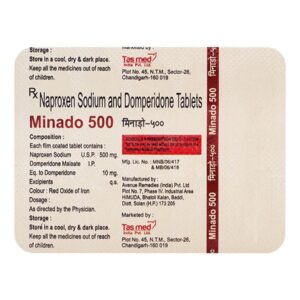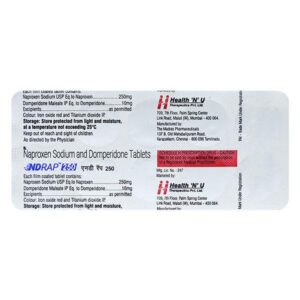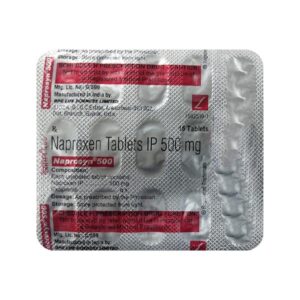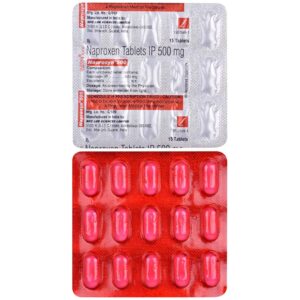NAPROXEN + DOMPERIDONE
Naproxen: Naproxen is a nonsteroidal anti-inflammatory drug (NSAID) commonly used to relieve pain, inflammation, and stiffness caused by various conditions such as arthritis, musculoskeletal injuries, menstrual cramps, and other inflammatory conditions.
Its mechanism of action involves inhibiting the enzyme cyclooxygenase (COX), which reduces the production of prostaglandins – chemicals in the body that contribute to pain, inflammation, and fever. By inhibiting COX, naproxen helps alleviate pain and reduce swelling.
The usual dose of naproxen varies depending on the condition being treated. For mild to moderate pain or fever, an initial dose of 250-500 mg is typically taken, followed by 250 mg every 6-8 hours as needed. For chronic conditions like arthritis, a higher dose of 500 mg is initially taken, followed by 250-500 mg every 12 hours.
As with any medication, naproxen can cause side effects. Common side effects include stomach upset, heartburn, constipation, diarrhea, dizziness, headache, and skin rash. In some cases, naproxen may cause more serious adverse reactions like gastrointestinal ulcers, bleeding, kidney problems, and allergic reactions. It is important to follow the recommended dose and seek medical attention if any severe side effects occur.
Naproxen should be used cautiously in individuals with a history of gastrointestinal ulcers, bleeding disorders, kidney or liver disease, or in those taking blood thinners or other NSAIDs. It is also important to avoid alcohol while taking naproxen, as it can increase the risk of stomach bleeding.
It is advised to consult a healthcare professional or read the package insert for specific instructions and any potential drug interactions before starting naproxen.
Domperidone: Domperidone is a medication that is primarily used to treat gastrointestinal disorders such as nausea, vomiting, and gastrointestinal reflux.
The drug works by blocking the action of dopamine in the gut, which helps to increase the emptying of the stomach and movement through the digestive system. This helps to alleviate symptoms such as nausea and vomiting.
The usual recommended dose of domperidone for adults is 10mg to be taken three to four times a day, preferably before meals and at bedtime. However, the dose may vary depending on the individual’s condition and response to treatment. It is important to follow the instructions provided by your healthcare provider or the medication label.
Common side effects of domperidone include headache, dry mouth, dizziness, and abdominal cramps. In rare cases, it may cause more serious side effects such as heart rhythm disorders, allergic reactions, or breast milk production in men and non-pregnant women. If you experience any concerning symptoms or side effects while taking domperidone, it is advisable to consult your doctor immediately.
It is important to note that domperidone is associated with a rare but serious risk of cardiac arrhythmias. Due to these concerns, the use of domperidone may be restricted in some countries, and it is typically recommended for short-term use only. It is always advisable to talk to your doctor or healthcare professional about any concerns or questions you may have about this medication.










